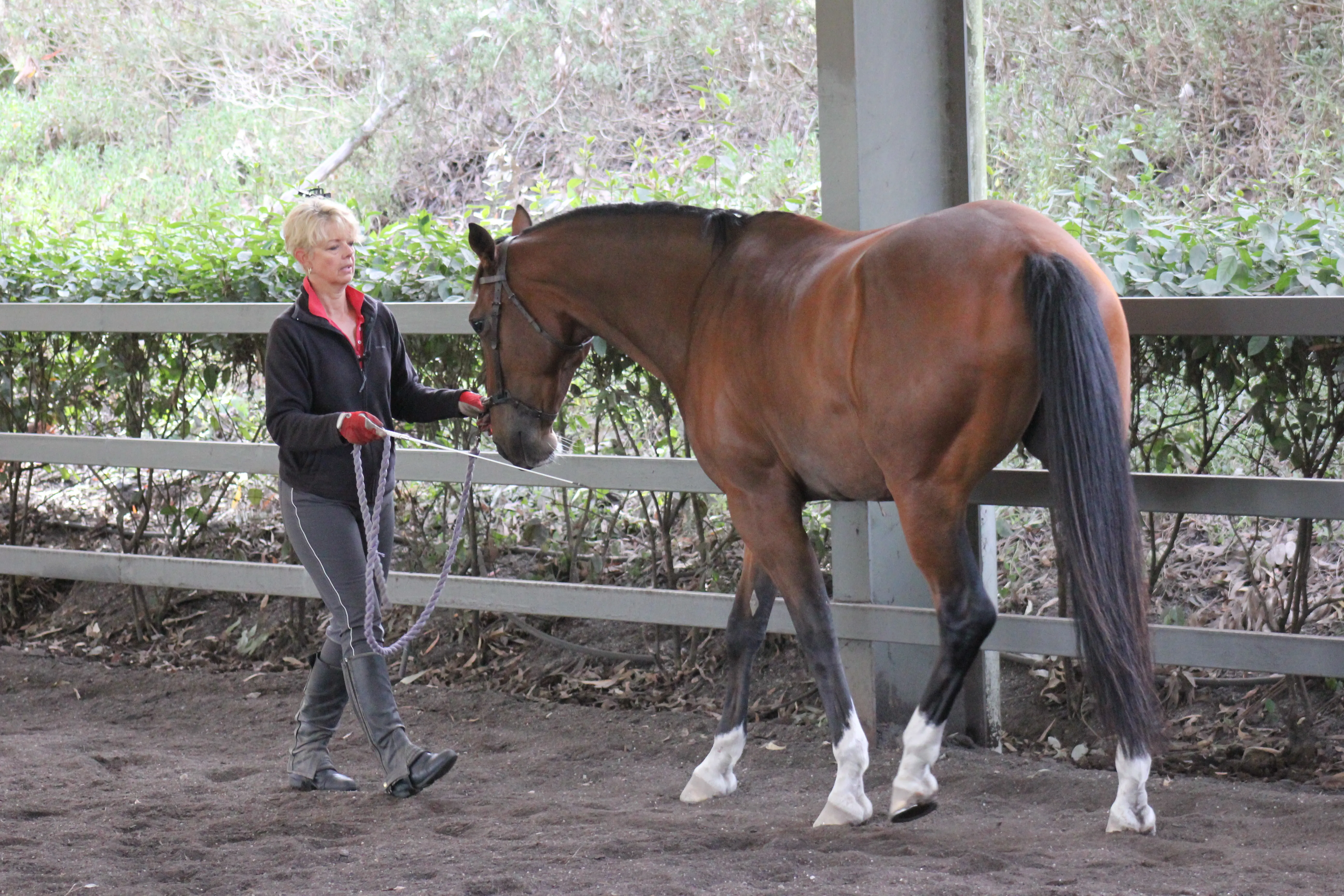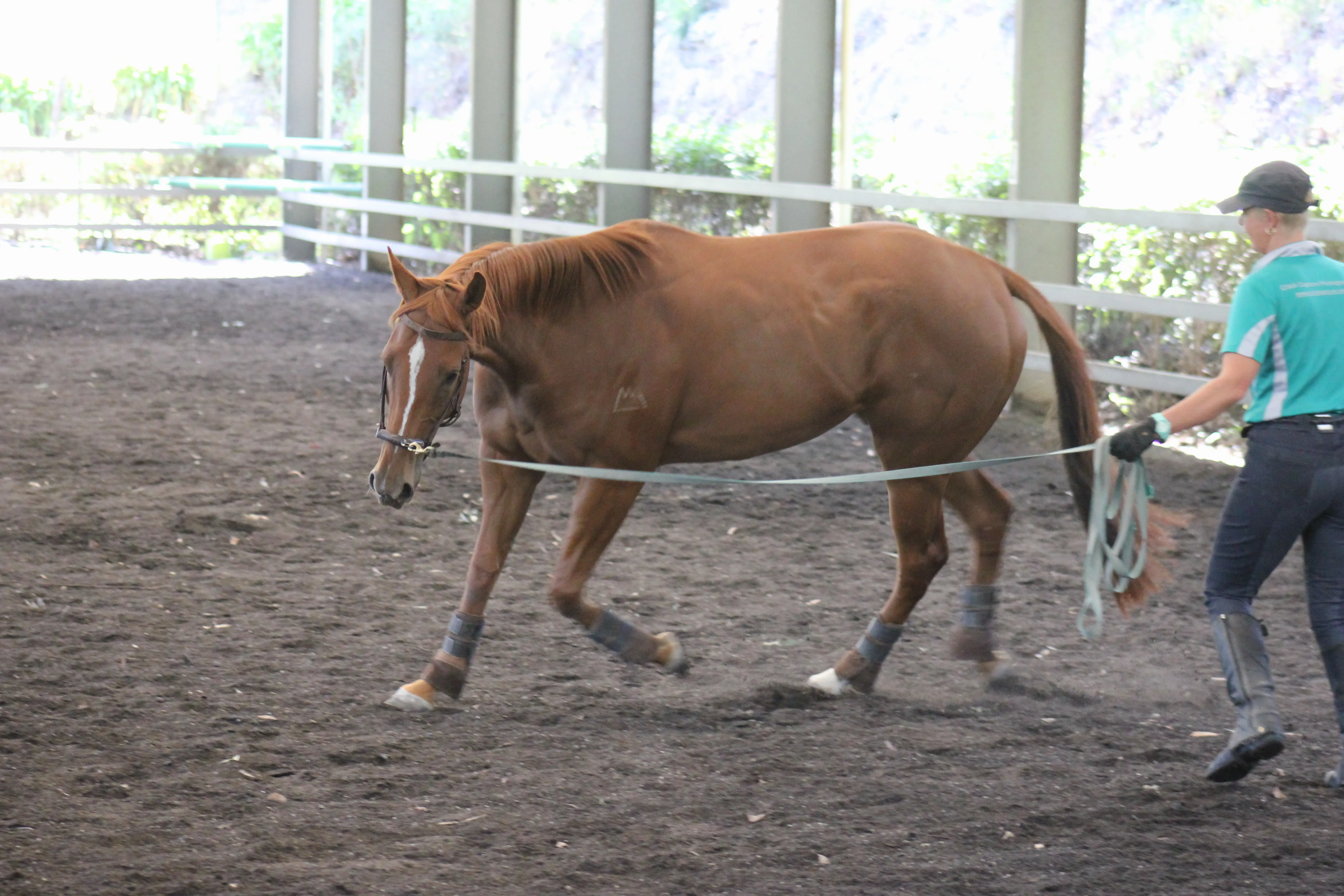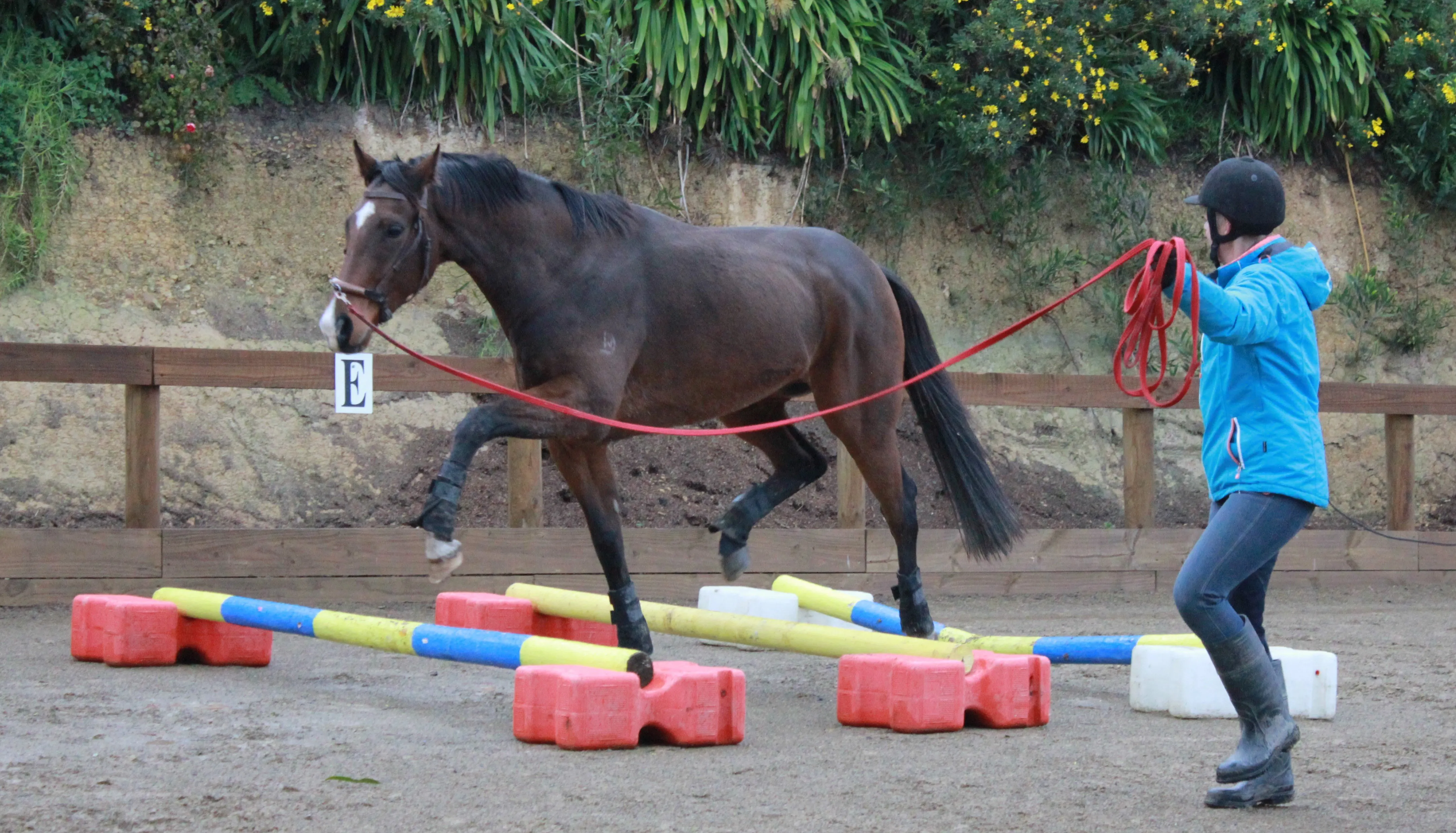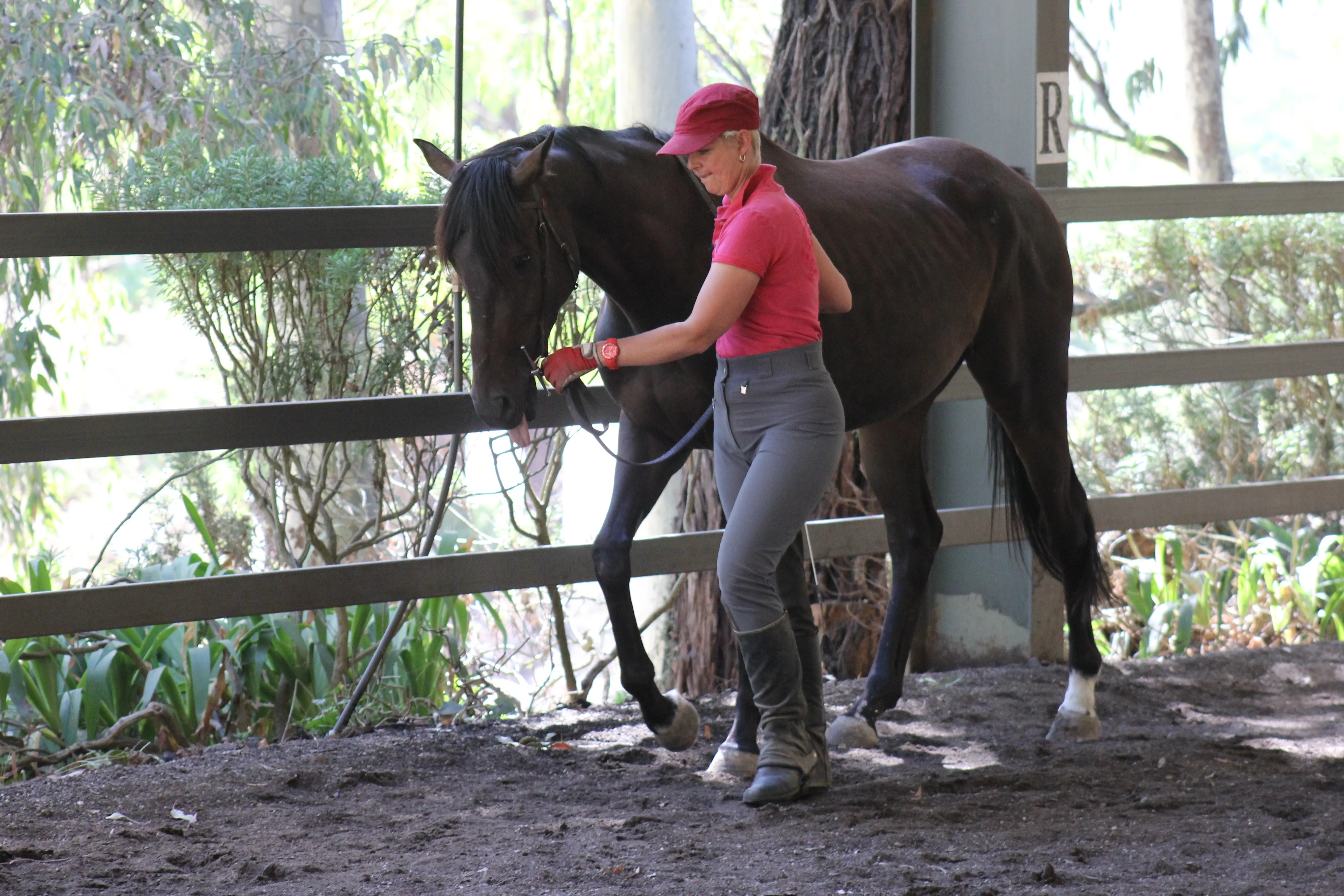The Power of Slow and Steady: Building Sound, Confident and Happy Racehorses
In the fast-paced world of racing, it can be easy to think that faster is always better. The pressure to get horses to the track, meet deadlines, or keep up with others in the barn can sometimes override what’s best for the individual horse. Yet, when we step back and look at what produces long-term success — sound, confident and willing racehorses that love their jobs — one truth becomes clear: the best results come from slow, systematic training that allows both mind and body to develop together.
Whether you’re an experienced trainer or an owner who loves watching your horse race, understanding this principle is vital. It’s not just about creating a fast horse — it’s about creating a horse that can stay fast, stay sound and stay confident for seasons to come.
Why Slow, Systematic Training Works
A racehorse is not a machine. Each one is a living, breathing athlete with a body that needs time to strengthen and a mind that needs to understand what’s being asked.
When training progresses too quickly — more speed, more workload, more pressure — the horse’s body may not be physically ready to handle it. This mismatch between physical readiness and training demand is one of the most common causes of injury, burnout or behavioural issues.
In contrast, a slow, steady, systematic training program gives every system — muscles, tendons, ligaments, bones, cardiovascular capacity and mental focus — time to adapt. That adaptation is what builds resilience, soundness and longevity.
Think of it like constructing a building. If the foundation is weak or rushed, the structure might look good for a short while but won’t stand the test of time. The early work — often the “boring” or “slow” work — is what gives strength and stability to everything that comes after.

Developing the Mind as Well as the Body
A racehorse’s mind is just as important as its body. Horses are prey animals with strong flight instincts, and training too quickly can create confusion, stress, or anxiety that shows up as poor behaviour, resistance, or a lack of confidence.
By taking time with each stage of training — from handling and groundwork to mouthing education, the treadmill and early ridden work — we give the horse time to understand, process, and trust. This mental foundation creates a horse that is not only willing and cooperative, but also safe for grooms, track riders and jockeys.
When horses know what to expect, feel secure in their routines and have confidence in their handlers, they are calmer and more relaxed. That translates directly into fewer accidents, less stress for staff and better performance on the track.
A confident horse is the one that walks out of its box with its ears pricked, does its work with enthusiasm, and recovers quickly from each session. That’s the horse everyone wants in the barn — the one that’s a pleasure to work with and always gives their best effort.
The Benefits for Everyone in the Team
A horse that has been developed slowly and correctly is easier and more enjoyable for everyone around it.
For grooms, it’s a horse that stands quietly, eats well and is pleasant to handle.
For track riders, it’s a balanced, supple horse that listens to the aids and doesn’t pull, spook or fight.
For jockeys, it’s a horse that travels kindly with enthusiasm, is responsive and gives confidence rather than concern.
When the horse is physically balanced and mentally settled, it creates harmony throughout the team. The work becomes enjoyable, predictable and productive. That’s how you end up with the favourite in the barn — the horse everyone loves to look after and ride.

Building the Athlete: Balance, Coordination and Suppleness
Every successful racehorse starts with the same basics: balance, coordination, suppleness and flexibility. These aren’t just buzzwords — they’re the physical qualities that allow a horse to move efficiently, stay sound, and perform to its genetic potential.
1. Balance
Balance is the foundation of all movement. A balanced horse carries itself evenly, uses both sides of the body equally, and maintains rhythm through transitions and turns.
In early training, balance can be improved through groundwork and controlled exercises on the walker or treadmill, where the horse learns to use its core and engage the hindquarters.
Under saddle, steady, even contact and correct rider position help the horse find and maintain balance at every gait.
When a horse is balanced, it’s less likely to stumble, fall in on the turns, or overuse one side of the body — all of which prevent injury and contribute to long-term soundness.
2. Coordination
Coordination develops through repetition and consistency. As young horses learn to carry a rider or work on the treadmill, they are essentially learning new motor patterns.
Giving them time to master these patterns means they can move fluidly and confidently at higher speeds later on. Skipping steps here is like asking a child to sprint before they’ve learned to walk properly — it just creates tension and imbalance.
3. Suppleness and Flexibility
Suppleness is what keeps joints, muscles, and tendons healthy. It allows a horse to bend through its body, stretch across its topline and recover quickly from exertion.
Exercises like in hand work, pole work, gentle hill training and transitions help develop this flexibility. These not only prepare the horse for the physical demands of racing but also help prevent stiffness, strain and injury.
The Role of Groundwork, Treadmill and Ridden Work
Each stage of a racehorse’s development has a purpose — and when used systematically, they build on each other.
Groundwork: Building Trust and Coordination
Groundwork introduces the horse to handling pressure, responding to cues and moving correctly without the added complexity of a rider.
It helps develop trust, body awareness and communication between horse and handler.
Simple exercises like leading correctly in hand, yielding the hind quarters, backing up, lunging including cavelletti and in hand work improve coordination and confidence — all while strengthening key muscle groups.
Treadmill Training: Controlled Conditioning
The treadmill is an excellent tool for controlled, progressive conditioning. It allows precise management of speed, incline, and duration — perfect for building strength and stamina safely.
Because the environment is consistent, it helps eliminate external stressors, letting the horse focus purely on movement and fitness.
Regular treadmill sessions complement the other training beautifully, especially in developing symmetry and core strength.
Under Saddle: Refining Balance and Responsiveness
Once the horse is confident on the ground, under saddle work begins.
At this stage, focus should remain on balance, rhythm, and relaxation — not speed.
The rider’s role is to guide the horse toward correct posture and even weight distribution, teaching it to carry itself without tension.
Each phase of ridden work — walk, trot, canter, and eventually gallop — should only progress once the horse is mentally calm and physically ready.

The Science of Slow Training and Soundness
Modern research supports what good horsemen have always known: tissues strengthen in response to progressive, consistent loading.
- Bones become denser when given small, repeated stresses with adequate recovery time.
- Tendons and ligaments adapt slowly, requiring months of steady work to mature and strengthen.
- Muscles develop relatively quickly but need variety in exercise to avoid fatigue or imbalance.
If training advances too rapidly — longer gallops, faster speeds, or harder tracks before the horse’s body has adapted — micro-damage accumulates faster than the body can repair it. That’s when injuries occur.
A well-planned, slow-build program respects these timelines. It allows tissues to remodel, recover and reinforce. The result is a horse that can handle workload without breaking down — and that’s worth far more than a few extra weeks saved early on.
Preventing Injuries and Accidents
Injury prevention isn’t just about luck; it’s about management and preparation.
A horse that’s mentally rushed or physically unbalanced is far more likely to trip, spook, or resist — increasing the risk of accidents for both horse and rider.
Systematic training prevents this by:
- Establishing consistent patterns and routines
- Ensuring even musculoskeletal development
- Improving proprioception (the horse’s awareness of its own body)
- Reducing stress hormones that lead to reactivity
Every minute invested in building a calm, coordinated horse saves time, money, and heartache later. Horses trained this way are easier to manage, safer to ride and more resilient in the long run.
Creating the Favourite in the Barn
Every stable has that one horse — the one everyone loves. The horse that’s easy to ride, easy to look after, always does their job, and gives their heart every time they run.
That horse doesn’t happen by accident. It’s the product of thoughtful, patient, systematic training.
When a horse’s physical and mental needs are met, it thrives. It becomes confident, curious and willing. It performs better because it feels good — inside and out. And that energy spreads through the whole barn.
Owners notice the gleam in its coat and the relaxed attitude at the races. Riders trust it. Grooms are proud of it. That’s the kind of horse every team dreams of — and it starts with a deliberate commitment to slow and steady training.
From Basics to the Finished Athlete
The goal isn’t to keep training slow forever. The goal is to get the basics right, early and build from there.
A well-rounded racehorse has:
- A strong core and topline
- Even muscle development
- Balanced movement
- Mental confidence
- A desire to work
Once these are established, speed and performance come easily — because the horse is physically and mentally ready to give it.
Training that focuses on these foundations not only produces better athletes but also extends careers. Horses stay sounder, happier, and more consistent. They recover faster between runs, maintain appetite and condition and require less veterinary intervention.

Conclusion: The Long Game Pays Off
In racing, patience can feel like a luxury. But in truth, it’s the most valuable investment you can make in your horses and your team.
Slow, systematic and thoughtful training builds the kind of horse that doesn’t just run fast — it runs often, it runs willingly and it runs for years.
It protects the horse’s body, nurtures its mind and creates a safer, more enjoyable environment for everyone who works with it.
When you take the time to build the foundations properly, you’re not holding your horse back — you’re setting it up to reach its full potential and to love doing it.
That’s how you create a sound, confident, long-lasting racehorse… and the next favourite of the barn.
